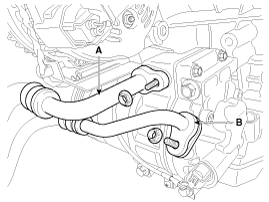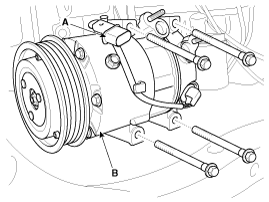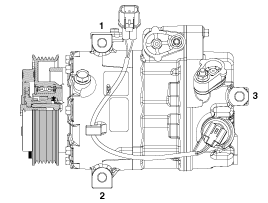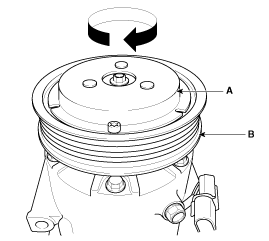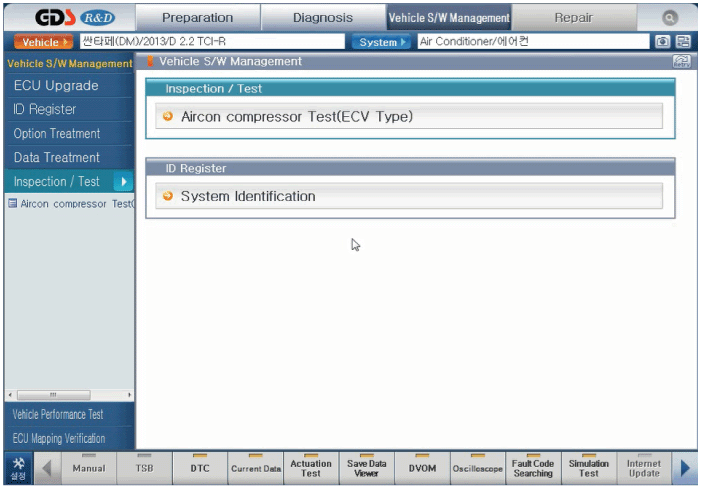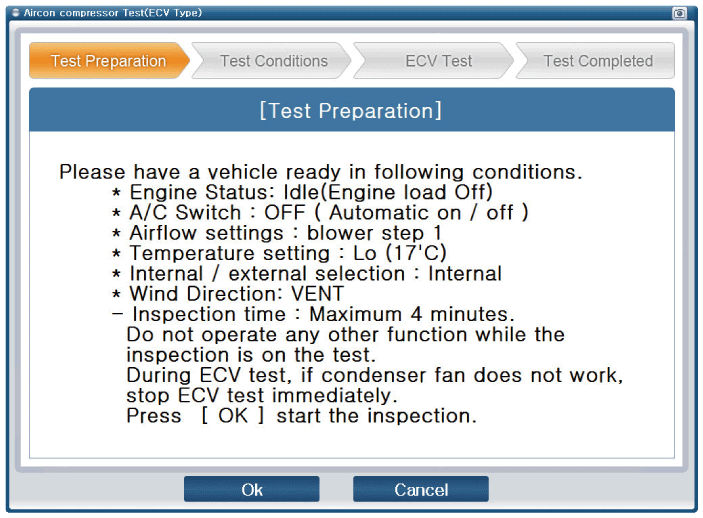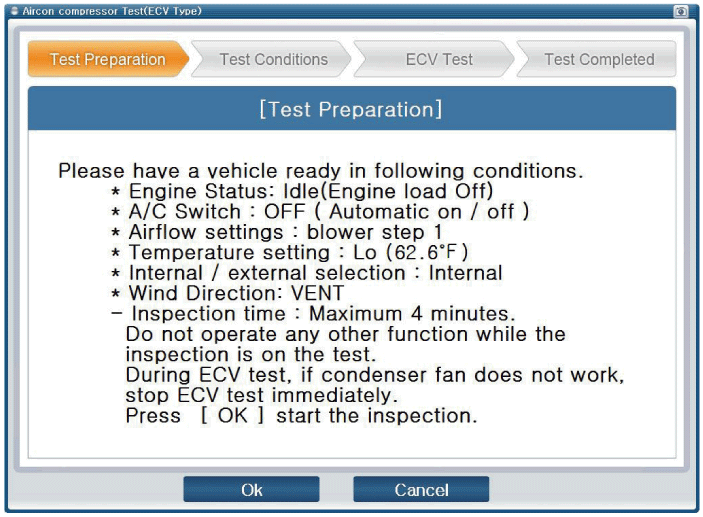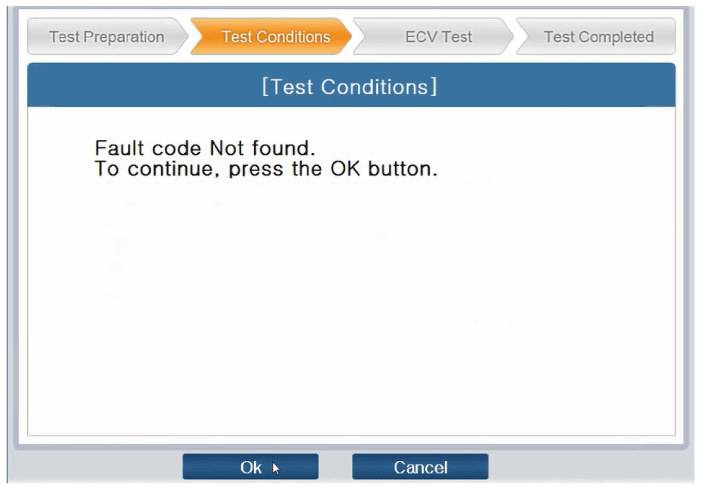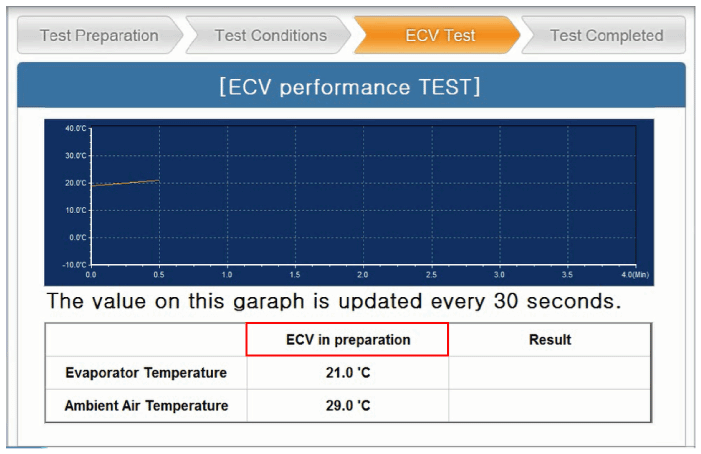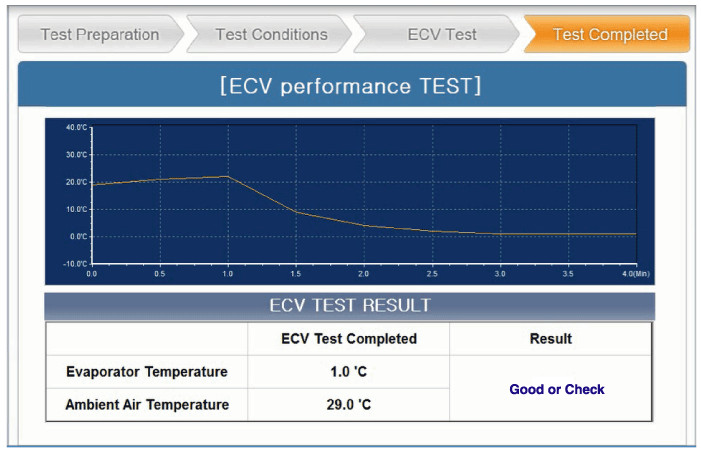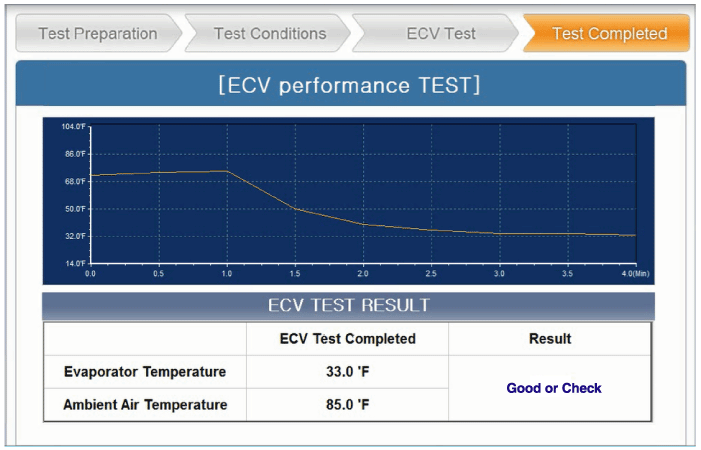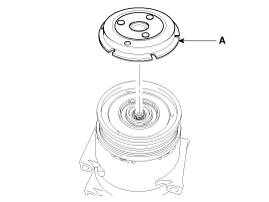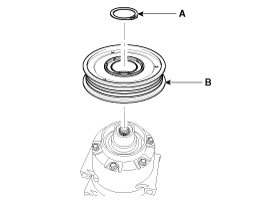 Hyundai Equus: Compressor Repair procedures
Second generation VI (2009–2025) / Hyundai Equus VI 2009-2025 Service Manual / Heating, Ventilation and Air Conditioning / Air Conditioning System / Compressor Repair procedures
Hyundai Equus: Compressor Repair procedures
Second generation VI (2009–2025) / Hyundai Equus VI 2009-2025 Service Manual / Heating, Ventilation and Air Conditioning / Air Conditioning System / Compressor Repair procedures
Second generation VI (2009–2025) / Hyundai Equus VI 2009-2025 Service Manual / Heating, Ventilation and Air Conditioning / Air Conditioning System / Compressor Repair procedures
| Removal |
| 1. |
If the compressor is marginally operable, run the engine at
idle speed, and let the air conditioning work for a few minutes, then
shut the engine off. |
| 2. |
Disconnect the negative (-) battery terminal. |
| 3. |
Recover the refrigerant with a recovery/charging station. |
| 4. |
Remove the engine room under cover. |
| 5. |
Loosen the drive belt.
(Refer to Engine Mechanical System - "Timing System") |
| 6. |
Remove the bolts, then disconnect the suction line (A) and discharge line (B) from the compressor.
|
| 7. |
Disconnect the compressor switch connector (A) and remove the compressor (B) by loosening the mounting bolts.
|
| Installation |
| 1. |
Make sure the compressor mounting bolt with the correct
length is screwed in. Tighten the mounting bolts with the specified
tightening order.
|
| 2. |
Install in the reverse order of removal.
|
| Inspection |
| 1. |
Check the plated parts of the hub assembly (A) for color
changes, peeling or other damage. If there is damage, replace the
assembly. |
| 2. |
Check the pulley (B) bearing play and drag by rotating the
pulley by hand. Replace the pulley with a new one if it is noisy or has
excessive play/drag.
|
| External Control Valve Compressor Inspection(GDS) |
Compressor type: Fixed type compressor, External control valve, Internal control valve.
In cases of fixed type and internal control valve, it is possible to inspect compressor's operation with clutch noise.
When it comes to External control valve, however, it cannot be checked in this way bacause it doesn't have a clutch.
So, ECV should be inspected with GDS as below.
| 1. |
Connect GDS to the vehicle and select 'Aircon Compressor Test(ECV type)'
[ECV1]
|
| 2. |
Make the vehicle ready as the GDS instruction on the monitor. (Turn off A/C 'switch' only)
[ECV2]
[ECV3]
|
| 3. |
Check if other DTC codes are found before inspect ECV
compressor. If so, solve that problems first. If not, press 'OK' button
to continue.
[ECV4]
|
| 4. |
Start inspection
[ECV5]
[ECV6]
|
| 5. |
Check the result of inspection and click 'Check Detail' if
it's 'Check'. Follow the instruction and inspect ECV again from the
first step.
[ECV7]
[ECV8]
|
| Disassembly |
| 1. |
Remove the engine room under cover. |
| 2. |
Loosen the drive belt.
(Refer to Engine Mechanical System - "Timing System") |
| 3. |
Remove the center bolt and the hub bolts while holding the pulley with a disc & hub assembly bolt remover (09977-3R000).
|
| 4. |
Remove the hub assembly (A).
|
| 5. |
Remove the pulley (B) after removing the snap ring (A) with snap ring pliers.
|
| 6. |
Reassemble in the reverse order of disassembly.
|
 Compressor Components and Components Location
Compressor Components and Components Location
Components
1. Center Bolt2. Hub Bolt3. Hub Assembly4. Snap Ring5. Pulley6. Compressor Assembly
...
 Condenser Repair procedures
Condenser Repair procedures
Inspection
1.
Check the condenser fins for clogging and damage. If clogged,
clean them with water, and blow them with compressed air. If bent,
gently bend them using a screwdriver or pliers.
...
See also:
Headlight leveling device
Automatic type
It automatically adjusts the headlight beam level according to the number of
passengers and the loading weight in the luggage area.
It offers the proper headlight beam under various ...
Battery Replacement
If the Smart Key is not working properly, try replacing the battery with a new
one.
Battery Replacement of Conventional Smart Key
Battery Type: CR2032 To Replace the Battery:
1. Pry open the ...
LCD Display Control
The LCD display modes can be changed by using the control buttons on the steering
wheel.
1) button : Changing LCD modes
(right to left), or returning to previous position
(2) but ...
Categories
Hyundai Equus Manuals
© 2011-2025 Copyright www.heqmanual.com

